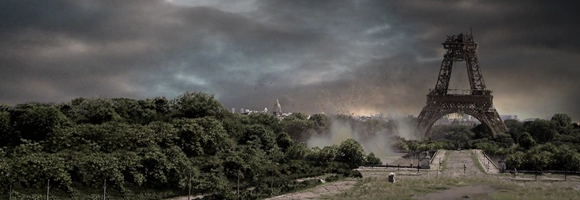96 hours later

↑96 hours to the stone age at ↑GigaOM complements ↵behind closed doors and ↵telegeography. The story asks, especially in respect to information technology, what will happen when electrical power won’t be delivered anymore. Well, an apocalypse in the strict sense of the term will happen—a revelation. It will be revealed to all of us in unblinking clearness, on how much hardware around us we depend, which in turn depends on electricity.
The gist of this kind of speculation is informed by scientific methodology: Take an element, or a whole category of elements, out of a system and see what happens. In this case the system in question is the global human sociotechnic system. Obviously an actual experiment can’t be done in this context and on that grand a scale. Hence the conclusions are based on educated guesses, as much as possible grounded on reliable data.
The History Channel aired an according television series which is a haunting hybrid out of post-apocalyptic speculative fiction and documentary, carried by spectacular computer generated imagery: ‘↑Life After People‘ (de Vries 2008-2010):
HISTORY takes you on an amazing visual journey that uncovers what would happen if humans were suddenly to disappear. Visit the ghostly villages surrounding Chernobyl, travel to remote islands off the coast of Maine to search for abandoned towns that have vanished from view in only a few decades, then head beneath the streets of New York to see how subway tunnels may become watery canals.
That’s not enough yet. One of my favourite novels is by ↑Philip Wylie, famous for his science fiction novel ‘↑When Worlds Collide‘ (1933), which very successfully was ↑adapted to the silver screen (Maté 1951). but he also wrote a literary thought experiment in gender studies. The core plot idea of ‘The Disappearance’ (Wylie 1951) is the same as in the cases above: Take one aspect out of the system. Here are the novel’s opening sentences:
The female of the species vanished on the afternoon of the second Tuesday of February at four minutes and fifty-two seconds past four o’clock, Eastern Standard Time. The event occurred universally at the same instant, without regard to time belts, and was followed by such phenomena as might be expected after happenings of that nature. (Wylie 1951: 1)

